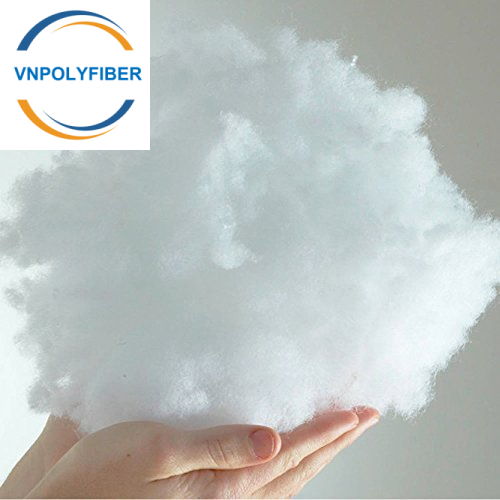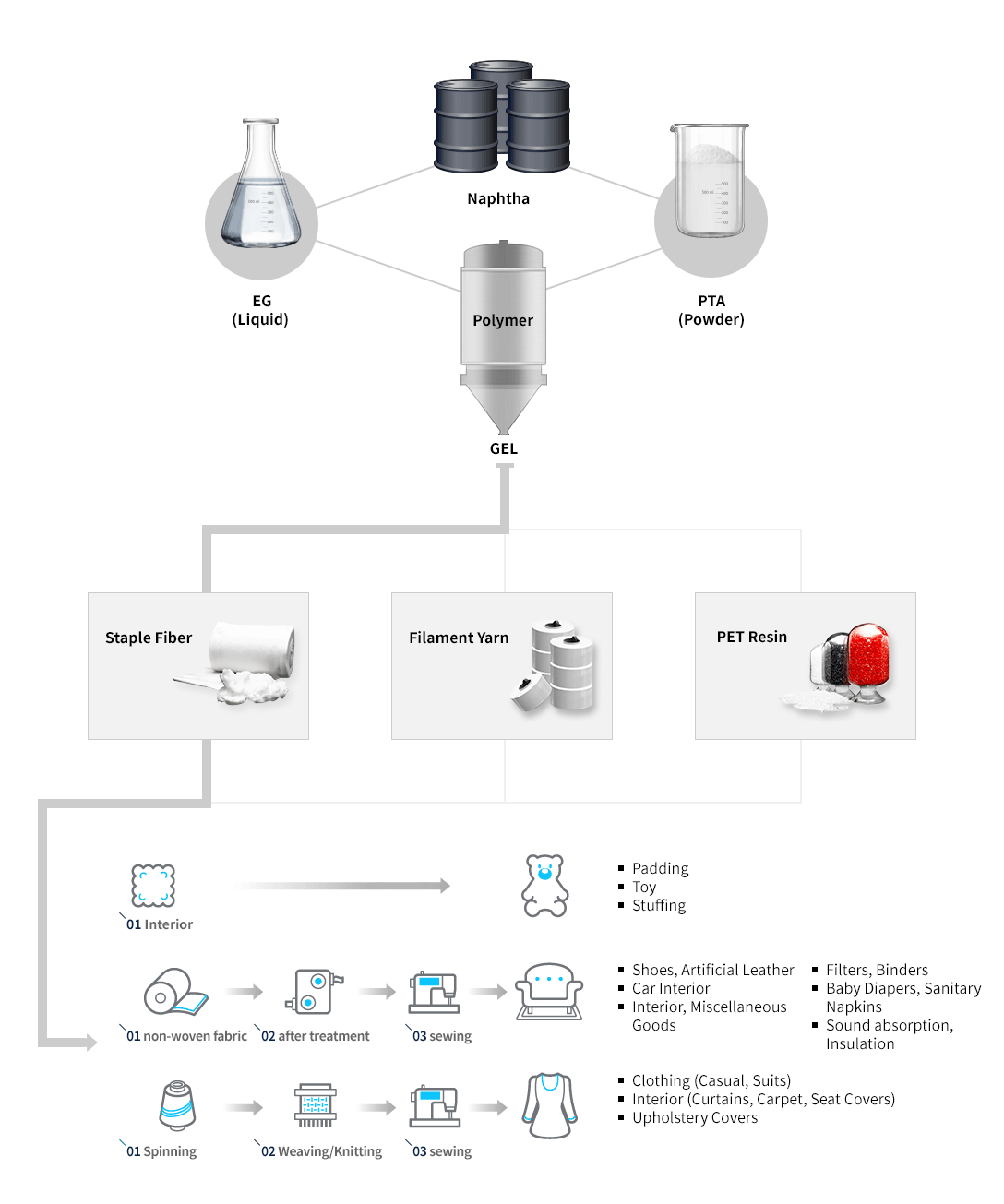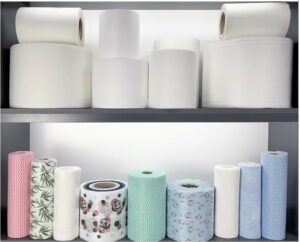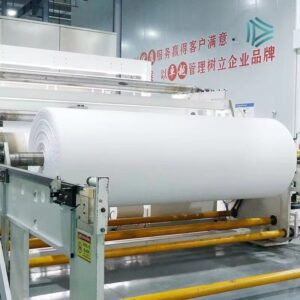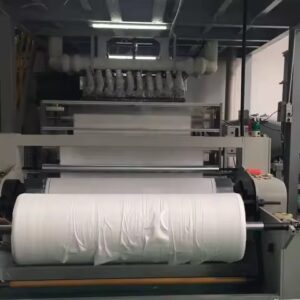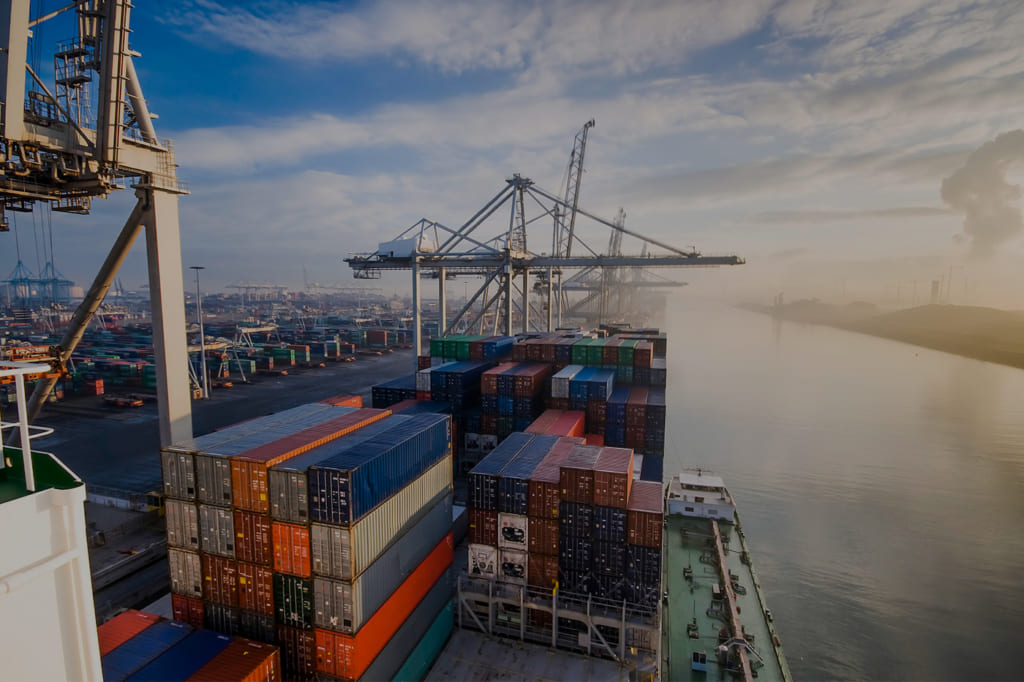Overview of Polyester Staple Fiber
Polyester Staple Fiber (PET fiber), dominates the world synthetic fibers industry. Polyester Staple Fiber occupy the largest volume of synthetics and exceed nylons, rayon, and acrylic fibers. Polyester Staple Fiber are inexpensive, easily produced from petrochemical sources, and have a desirable range of physical properties. Polyester Staple Fiber are strong, lightweight, easily dyeable, and wrinkle-resistant, and have very good wash–wear properties.
Since its invention, polyester staple fibers have experienced significant advancements due to their inherent advantages. Currently, they represent approximately one-third of global textile fibers and account for around half of textile fiber processing capacity in China. Polyester has emerged as a leader in synthetic fibers and is regarded as an ideal textile material today.
Their versatility is legendary. Both as continuous filament yarn and staple fiber, they are used in countless varieties, blends, and forms of textile apparel fibers, household, and furnishing fabrics. They form microfibers for outdoor wear and sportswear. Polyesters are used in carpets, industrial fibers, and yarns for tire cords, car seat belts, filter cloths, tentage fabrics, sailcloth, and so on. This organic synthetic fiber is formed by the polycondensation of a diacid (terephthalate acid) and alcohol (glycol-ethylene). The used process to obtain this polymer is the melt spinning with 400% heat stretching.
Polyester is a category of polymer whose monomer contains the ester functional group. The most common polyester for fiber purposes is poly (ethylene terephthalate), or simply PET. This is also the polymer used for many soft drink bottles and it is becoming increasingly common to recycle them after use by remelting the PET and extruding it as fiber. This saves valuable petroleum raw materials, reduces energy consumption, and eliminates solid waste sent to landfills.
PET is made by reacting ethylene glycol with either terephthalic acid or its methyl ester in the presence of an antimony catalyst. The reaction is carried out at high temperature and vacuum to achieve the high molecular weights need to form useful fibers. PET is melt spun.
Today over 70 to 75% of the polyester is produced by CP (continuous polymerization) process using PTA(purified Terephthalic Acid) and MEG. The old process is called the Batch process using DMT (Dimethyl Terephthalate) and MEG( Mono Ethylene Glycol). Catalysts like 5b3O3 (ANTIMONY TRIOXIDE) are used to start and control the reaction.
TiO2 (Titanium dioxide) is added to make the polyester fiber/filament dull. Spin finishes are added at melt spinning and draw machines to provide static protection and have cohesion and certain frictional properties to enable fiber to get processed through textile spinning machinery without any problem.
Characteristics of Polyester Staple Fiber
- Good strength
- Low absorbency
- Resistant to stretching and shrinking
- Resistant to most chemicals
- Easy to wash – Quick-drying
- Crisp and resilient when wet or dry
- Wrinkle and abrasion-resistant
- Retains heat-set pleats and creases
The primary quality characteristics of polyester staple fibers include linear density, the coefficient of variation for linear density, and the coefficient of variation for breaking strength, among others. Additionally, factors such as fracture elongation and the coefficient of variation for fracture elongation are important.
Polyester fibers exhibit high strength and elasticity, along with favorable elongation and elastic recovery properties. The strength of standard polyester fibers ranges from 35.2 to 52.8 cN/tex, with elongation at break typically between 30% and 40%. Polyester can be categorized based on processing methods, resulting in varieties with high strength and low elongation, as well as those with lower strength and higher elongation. Owing to their superior strength, elongation, and elasticity, polyester fibers offer excellent wear resistance, second only to nylon. Furthermore, polyester’s high initial modulus contributes to a stiff fabric with strong dimensional stability.
Absorption: Polyester has a low moisture regain and provides good insulation; however, its dyeing performance is limited due to low water absorption and high static electricity generated by friction.
- High Strength: The strength of polyester staple fiber ranges from 2.6 to 5.7 cN/dtex, while high-strength variants achieve strengths between 5.6 and 8.0 cN/dtex. Due to its low hygroscopicity, the wet strength of polyester remains comparable to dry strength. Its impact strength is four times greater than that of nylon and twenty times greater than that of viscose.
- Good Elasticity: The elasticity of polyester is comparable to wool, allowing it to recover almost completely with an elongation of 5% to 6%. Wrinkle resistance is superior to that of other fibers, resulting in fabrics that do not wrinkle and maintain good dimensional stability. The modulus of elasticity ranges from 22 to 141 cN/dtex, which is two to three times greater than that of nylon. Thus, polyester fabrics are durable, wrinkle-resistant, and require little to no ironing.
- Heat Resistance: Polyester fibers are produced via melt spinning and can be remelted upon heating, classifying them as thermoplastic fibers. They exhibit a higher melting point, along with smaller specific heat capacity and thermal conductivity, which contribute to superior heat resistance and insulation compared to other synthetic fibers.
- Good Thermoplasticity and Poor Melting Resistance: Due to their smooth surface and closely arranged internal molecules, polyester is an excellent heat-resistant fabric in synthetic materials. While it possesses thermoplasticity, allowing for creative applications such as pleated skirts, it is important to note that polyester fabrics demonstrate poor melting resistance; they can develop holes when exposed to soot and sparks. Therefore, it is advisable to avoid contact with cigarette butts and other sources of ignition during wear.
- Good Wear Resistance: Polyester fibers showcase high wear resistance, ranking second only to nylon while outperforming many natural and synthetic fibers in this regard.
- Good Light Resistance: Polyester fabric exhibits light resistance that is second only to acrylic fibers. Its light resistance surpasses that of natural fibers, especially in sun exposure situations, where it performs nearly on par with acrylic fibers.
- Corrosion Resistance: Polyester is resistant to a variety of substances, including bleaching agents, oxidants, hydrocarbons, ketones, petroleum products, and inorganic acids. It can withstand dilute alkalis and is not prone to mold; however, it can decompose under hot alkaline conditions. Additionally, polyester demonstrates strong resistance to both acids and alkalis, alongside UV resistance.
- Dyeability: Polyester fibers are hydrophobic synthetic materials that lack reactive groups, such as those found in cellulose or protein fibers, which are critical for effective dye binding. The densely packed molecular structure of polyester limits the size of voids, making it difficult for dye molecules to penetrate, especially at lower temperatures. Unlike cotton fibers, which expand to create additional voids for dye absorption, polyester fibers retain their stability in wet conditions. Enhancing the plasticity of polyester may improve the dyeing process; however, it is crucial to address the dyeing defects commonly associated with polyester, as these can pose challenges during production. A comprehensive understanding of issues such as color patterns, spots, and discrepancies is essential for identifying their origins throughout the dyeing process. Developing preventive strategies to mitigate these defects is important for minimizing their occurrence. While polyester has limited dyeability due to the absence of specific dyeing groups in its molecular structure and its low polarity, it does exhibit good color fastness and resists fading.
- Hygroscopicity and Comfort Issues: Polyester has a tendency to be less hygroscopic, leading to a hot sensation, static electricity, and dust attraction, which may impact aesthetics and comfort. However, it dries quickly after washing, maintaining wet strength without deformation, thus ensuring good washability and durability.
Properties of Polyester Staple Fiber
The favorable properties of polyester are primarily attributed to its distinct macromolecular structure, which includes rigid benzene rings and aliphatic chains. This unique structure allows for excellent melt processability and ease of fiber production, while also ensuring sufficient rigidity of the macromolecules to provide a high initial modulus for the fibers. Polyester exhibits a range of commendable characteristics including high strength, good elasticity, and efficient processing capabilities. Fabrics produced from polyester are easy to maintain, resist deformation, and do not typically require ironing after washing. They can be spun solely from polyester or blended with various natural fibers, resulting in a diverse array of applications in clothing, household textiles, and industrial textiles.
Thermal Properties
Polyester is classified as a thermoplastic fiber with a glass transition temperature ranging from 68 to 81°C. Below this transition temperature, the molecular chain activity is minimal, allowing polyester to maintain its shape under external forces, which is advantageous for regular use. The softening point of polyester lies between 230 and 240°C; exceeding this temperature results in fiber disorientation and irreversible deformation from molecular chain movement. In dyeing and finishing processes, temperatures must be maintained above the glass transition temperature but below the softening point. Typically, the thermosetting temperature in dyeing and printing facilities ranges from 180 to 220°C, while the temperatures for dyeing, finishing, and ironing of finished garments are lower than those required for thermosetting. If these temperatures are not adhered to, the thermosetting effects may be compromised due to increased molecular chain activity. Polyester demonstrates excellent thermal properties among synthetic fibers, with less than 3% strength loss after 168 hours of heating at 150°C. In contrast, nylon fibers exhibit discoloration after 5 hours under the same conditions, leading to significant strength degradation. Many carbon-chain fibers begin to deform when exposed to temperatures above 80-90°C, resulting in considerable and often non-recoverable strength loss. Consequently, the heat resistance of cotton fibers should be emphasized when processing polyester-cotton blended fabrics. Polyester fibers can operate effectively within a broad temperature range of -70 to 170°C, retaining their integrity at lower temperatures.
Heat Resistance
Polyester fibers exhibit superior heat resistance and thermal stability among synthetic fibers, functioning effectively in the range of -70 to 170°C.
Elasticity: Polyester’s elasticity is comparable to wool, demonstrating excellent wrinkle resistance which ensures that the fabric remains smooth and retains its shape.
Wear Resistance: Polyester fibers exhibit strong wear resistance, second only to nylon fibers among synthetic options. Due to these properties, polyester filament is commonly utilized in clothing production, allowing fabrics to be easily washed without the need for ironing.
Mechanical Properties
The tensile strength and elongation at rupture of polyester fibers are influenced by their molecular structure and the drawing and heat treatment processes during production. Stretching aligns the polyester macromolecular chains, enhancing their directional arrangement which enables uniform strength under external forces. Generally, the breaking strength of polyester staple fibers ranges from approximately 0.27 to 0.66 N/tex, with an elongation at break between 25% and 50%. Under optimal heat treatment conditions, a higher degree of stretching during production correlates with increased fiber orientation and breaking strength, although this typically results in reduced elongation at break. Conversely, fibers can be produced to exhibit either high strength with low elongation or low strength with high elongation by adjusting drawing and heat treatment conditions. Polyester fibers boast remarkable elasticity, maintaining their shape under light external forces, and exhibit a strong ability to return to their original form after the removal of larger external forces, comparable to the elasticity of wool fibers.
Chemical Properties
The chemical stability of polyester fibers is determined by their molecular structure. The stability conferred by the presence of benzene rings and methylene groups enhances the overall chemical stability of polyester. Additionally, the ester bonds provide polyester with a degree of reactivity. Polyester fibers demonstrate good resistance to both inorganic and organic acids, though their alkali resistance is relatively poor. Concentrated alkalis or hot dilute alkaline solutions can lead to hydrolysis of the surface macromolecules, causing a peeling effect, wherein layers of the fiber dissolve, resulting in finer and softer fibers. This treatment can enhance the fiber’s activity within yarn composites and yield a silk-like effect in polyester fabrics. Furthermore, polyester exhibits good stability against oxidizers and reductants, minimizing damage during common printing and dyeing procedures. It is essential to select appropriate bleaching and dyeing methods and chemical agents based on the characteristics of the fibers when processing polyester-cotton blends. Additionally, polyester shows good resistance to solvents; most common non-polar and polar organic solvents at room temperature do not affect the fiber’s integrity.
- Thickness : 1.2D, 1.5D , 2.0D
- Color: white
- Length: Variable cut lengths
- Density : 1.39 g/cc
- Tenacity : high, 40 to 80 cN/tex
- Moisture regain : 0.4 % (at 65% R.H and 20°C)
- Elongation: high, 15 to 45%
- Flame reaction: melts, shrinks, black fumes
- Melting point: 260°C
- Tenacity : dry 3.5 – 7.0 : wet 3.5 – 7.0
- %Elongation at break: dry 15 – 45: wet 15 45
- %Moisture Regain: 0.4
- Shrinkage in Boiling Water: 0 – 3
- Crimps per Inch: 12 -14%
- Dry Heat Shrinkage: 5 – 8 (at 180 C for 20 min)
- Specific Gravity: 1.36 – 1.41%
- Elastic Recovery @2% =98 : @5% = 65
- Glass Transition Temp: 80 degree C
- Softening temp: 230 – 240 degree C
- Melting point: 260 – 270 degree C
- Effect of Sunlight: turns yellow, retains 70 – 80% tenacity at long exposure
- Resistance to Weathering: good
- Rot Resistance: high
- Alkali Resistance: damaged by CON alkali
- Acid Resistance: excellent
- Organic Chemical Resistance: good
@tonytan91 #polyesterstaplefibberpillow #psf #polyesterfiber #polyester
End Uses of Polyester Staple Fiber
In the apparel sector, polyester-cotton blended fabrics are commonly utilized for shirts and bedding, while polyester filaments are employed for clothing and sportswear. Furthermore, polyester can also be used to create imitation natural fibers such as wool, silk, and linen. Due to its ability to be produced in large quantities, ongoing improvements in processing technology, and reduced production costs, the outlook for polyester remains promising.
Polyester is commonly blended with cotton, wool, viscose fibers, linen, and other synthetic fibers to create various clothing textiles. In recent years, there has also been rapid growth in the development of polyester filament, which is processed into various deformable filaments—such as low-elasticity and network filaments—used for weaving woven fabrics, knitted fabrics, coats, and undergarments.
Additionally, in industrial applications, polyester filament is utilized for manufacturing tire cords, electrical insulation materials, ropes, and more. To mitigate the limitations associated with low moisture absorption and poor dyeability, modifications have led to the creation of high-moisture-absorption polyester, pilling-resistant polyester, and cationic dyeable polyester.
In summary, polyester plays a significant role in the cotton spinning industry, allowing to produce yarns that are spun alone or blended with cotton, viscose fiber, hemp, wool, and vinylon. These yarns are primarily used in clothing production but also find utility in household fabrics, packaging materials, filling materials, and heating products. The numerous advantages of polyester greatly enhance fabric performance, providing stability at high temperatures, resistance to cracking at low temperatures, and durability in various environmental conditions. Its good elasticity and resilience make it suitable for producing a wide range of clothing and extending its applications across industries such as medicine and paper manufacturing.
- Clothing: blouses, shirts, children’s wear, dresses, neckties, lining, lingerie and underwear, permanent press garments, slacks, suits.
- Home furnishings: carpets, curtains, bedsheets, and pillow covers.
- Technical textiles: floor coverings, V-belts, ropes and nets, tire cord.
Production Process of Polyester Staple Fiber
A manufactured fiber in which the fiber-forming substance is any long-chain synthetic polymer composed of at least 85% by weight of an ester of a substituted aromatic carboxylic acid, including but not restricted to substituted terephthalic units, p(-R-O-CO- C6H4-CO-O-)x and para-substituted hydroxy-benzoate units, p(-R-O-CO-C6H4-O-)x

Manufacturing Process of Polyester Staple Fiber
Polymerization – Manufacturing Polyester
PTA which is a white powder is fed by a screw conveyor into hot MEG to dissolve it. Then catalysts and TiO 2 are added. After that Esterification takes place at high temperatures. Then monomer is formed. Polymerization is carried out at high temperatures (290 to 300 degrees centigrade) and in an almost total vacuum. Monomer gets polymerized into the final product, PET (Polyethylene Terephthalate).
Melt Spinning – Manufacturing Polyester
This is in the form of thick viscous liquid. This liquid is then pumped to melt spinning machines. These machines may be single-sided or double-sided and can have 36/48/64 spinning positions. At each position, the polymer is pumped by a metering pump-which discharges an accurate quantity of polymer per revolution ( to control the denier of the fiber) through a pack that has sand or stainless steel particles as filter media and a spinnerette which could be circular or rectangular and will have a specific number of holes depending on the technology used and the final denier being produced. Polymer comes out of each hole of the spinnerette and is instantly solidified by the flow of cool dry air. This process is called quenching. The filaments from each spinnerette are collected together to form a small ribbon, passed over a wheel which rotates in a bath of spin finish: and this ribbon is then mixed with ribbon coming from other spinning positions, this combined ribbon is towed and is coiled in cans. The material is called undrawn TOW and has no textile properties.
Polymer Drawing and Cutting – Manufacturing Polyester
At the next machine ( the draw machine), undrawn tows from several cans are collected in the form of a sheet and passed through a trough of hot water to raise the temperature of the polymer to 70 degrees C which is the glass transition temperature of this polymer so that the polymer can be drawn.
In the next two zones, the polymer is drawn approximately 4 times and the actual draw or the pull takes place either in a steam chamber or in a hot water trough.
After the drawing is complete, each filament has the required denier and has all its submicroscopic chains aligned parallel to the fiber axis, thereby improving the crystallinity of the fiber structure and imparting certain strength.
The next step is to set the strength by annealing the filaments by passing them under tension on several steam-heated cylinders at temperatures 180 to 220 degrees C.
Also the filaments may be shrunk on the first zone of annealer by overfeeding and imparting higher strength by stretching 2% or so on the final zone of the annealer.
Next, the fiber is quenched in a hot water bath, then passed through a steam chest to again heat the tow to 100 degrees C so that the crimping process which takes place in the stuffer box proceeds smoothly and the crimps have good stability.
The textile spin finish is applied either before crimping by kiss roll technique or after crimping by a bank of hollow cone sprays mounted on both sides of the tow. The next step is to set the crimps and dry the tow fully which is carried out by laying the tow on a lattice that passes through a hot air chamber at 85degree C or so.
The tow is guided to a cutter and the cut fibers are baled for despatch. The cutter is a reel having slots at intervals equal to the cut length desired 32 or 38 or 44 or 51mm. Each slot has a sharp stainless steel or tungsten carbide blade placed in it.
The tow is wound on a cutter reel, at one side of the reel is a presser wheel which presses the tow onto the blades and the tow is cut. The cut fiber falls by gravity and is usually partially opened by several air jets and finally, the fiber is baled.
Some balers have a preweighting arrangement which enables the baler to produce all bales of a pre-determined weight. The bale is transported to a warehouse where it is “matured” for a minimum of 8/10 days before it is permitted to be despatched to the spinning mill.
What makes price difference of Polyester Staple fiber?
The significant price variation in polyester staple fibers can be attributed to several key factors:
- Physical Properties: The fibers are categorized based on their physical characteristics, including high strength with low elongation, medium strength with medium elongation, low strength with medium elongation, and combinations of high modulus with varying strength and modulus.
- Post-Processing Requirements: Different types of fibers are designed for specific post-processing needs, such as cotton-like, wool-like, hemp-like, and silk-like finishes.
- End Use Applications: The fibers are utilized in a range of applications, including apparel, home textiles, decorative items, and industrial uses.
- Functional Attributes: Variations in functional properties include the ability to be dyed, hygroscopic absorption, flame retardancy, coloration, anti-pilling, and anti-static properties.
- Fiber Cross-Section Variations: The fibers are also distinguished by their cross-sectional shapes, including profiled and hollow yarns.

